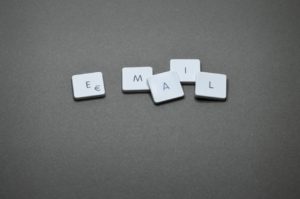If you want to do marketing the right way, you need marketing funnels. Being a marketer, I’m sure you must have heard the term ‘marketing funnel’. What is a marketing funnel, why it is important, and how to use one for your business?
As much as 79% of leads are never converted into sales. This is a big question mark on your marketing strategy if you end up wasting leads. The part of the solution to this problem lies in marketing funnels. Using a funnel to streamline and understand customer journey makes it easier to convert visitors into customers and customers into satisfied customers.
What is a Marketing Funnel?
A marketing funnel, also known as a sales funnel, is defined as a visual system of the customer journey that is used to attract visitors and convert them into customers. It shows you the complete buyer journey from getting awareness about your product to conversion:
It is called a funnel because visitors leave your funnel at every stage. For example, 100 people visit your website but only 50 will be interested in your offer. The other 50 might switch to your competitors. Out of these 50, 25 will consider your product and find it the best solution to their problem. Out of these 25, only 5 might convert and buy your product.
The number of people who enter your funnel from the top is much higher than those who reach the bottom and convert.
Here is how a real funnel looks like in Google Analytics:
A typical funnel has 4 stages:
- Awareness
- Interest
- Consideration
- Conversion.
The funnel is divided into three sections:
- Top of the funnel (awareness stage)
- Middle of the funnel (interest and consideration stages)
- Bottom of the funnel (conversion stage).
The stages and sections are used interchangeably. Top of the funnel (TOFU) and awareness represent the same part of the funnel. And so on. Some businesses have long funnels (with more stages) while others have shorter funnels. It depends on the business model and marketing strategy.
The visualization of the customer journey is, in any case, a crucial part of marketing and plays a significant role in conversion and sales.
Marketing Funnel Stages
The best way to understand marketing funnel stages is via the AIDA model. It identifies the cognitive stages that a person goes through during the buying process. The AIDA represents the stages:
- Awareness/Attention
- Interest
- Desire
- Action
Here is how it looks like practically:
Let’s see what each stage refers to:
1. Awareness/Attention
This is the first stage in the buying process where you need to make your product, service, or brand known to the target audience. Your marketing collateral for the awareness stage must be geared towards increasing awareness.
The best content for this stage includes blog posts, ads, and social media.
2. Interest
Once your target audience enters the awareness stage and knows your product and/or service, the next step is developing their interest. You need to present your offer as a solution to their problem. The marketing collateral must be geared towards developing audience interest.
The ideal content for developing audience interest is reviews, webinars, eBooks, whitepapers, email marketing, and how-to content.
3. Desire
Having an interest in your product doesn’t necessarily mean they want your product. This is the stage where you need to pitch your offer as a perfect solution in comparison to your competitors. Your product and/or service must appear desirable and attractive. It should be the best in the market.
The best content to make your offer desirable includes comparisons, whitepapers, reviews and testimonials, and email marketing.
4. Action
Finally, you need to persuade your audience to take action, convert, and buy your product. This is the stage where you convince them to proceed with the purchase. Your offer is already desirable and an option your audience is considering seriously, you just need to give them the final push to buy.
The best content to persuade them to take action includes coupons, exclusive offers, testimonials, email marketing, and phone calls.
Marketing Funnel Benefits
The reality is, not all businesses use a marketing funnel. This is because creating a system to visualize customer journey requires resources. Most small businesses ignore funnels outright. And this is one of the biggest mistakes they make.
Here are the key benefits of using marketing funnels to give you an idea of what you might miss:
1. Understand Buyer Journey
The marketing funnel helps you understand the buyer journey and the steps an average customer takes. You can use this data to improve targeting, buyer personas, and marketing.
Not all buyers follow the same path to becoming a customer.
For example, one customer might buy directly due to a recommendation from a friend while another customer might spend 2 months moving from awareness to conversion stage. This is why understanding buyer journey, steps they take, channels they use, etc. to know them better.
2. Boost Conversion and Sales
Your marketing funnel will tell you why people aren’t converting and why they leave the funnel. Fixing funnel leakages by understanding the root causes will help you improve conversions and sales.
In the absence of a marketing funnel, you’ll know that the conversion rate is low but you’ll not have any idea of why the conversion rate is low. Funnel solves the mystery by answering the why.
For example, if a lot of people leave the funnel during the consideration stage, it shows you need to create appropriate content that develops interest and helps your audience understand how your product will help solve their problem.
3. Improve Marketing
Marketing funnels improve marketing in two ways:
- You can create highly targeted marketing campaigns by specifically targeted people based on their stage in the customer journey.
- The data you get from the marketing funnel guides you as to what works and what doesn’t.
Perhaps the best thing about a marketing funnel is that it improves targeting. You can target visitors based on their stage in the funnel (create more stages for laser targeting). This works great for all types of businesses.
Final Words
Now that you know what is a marketing funnel, it is the right time to start using it. Trust me, it will prove to be a game-changer. Getting started with the marketing funnel isn’t too hard, you need to use a relevant marketing funnel tool. And that’s it.
It is a fully automated visualization of the buyer journey. You need to define the stages and relevant content once and leave the rest on the tool.
You’ll love how it goes…
Featured Image: Pexels






